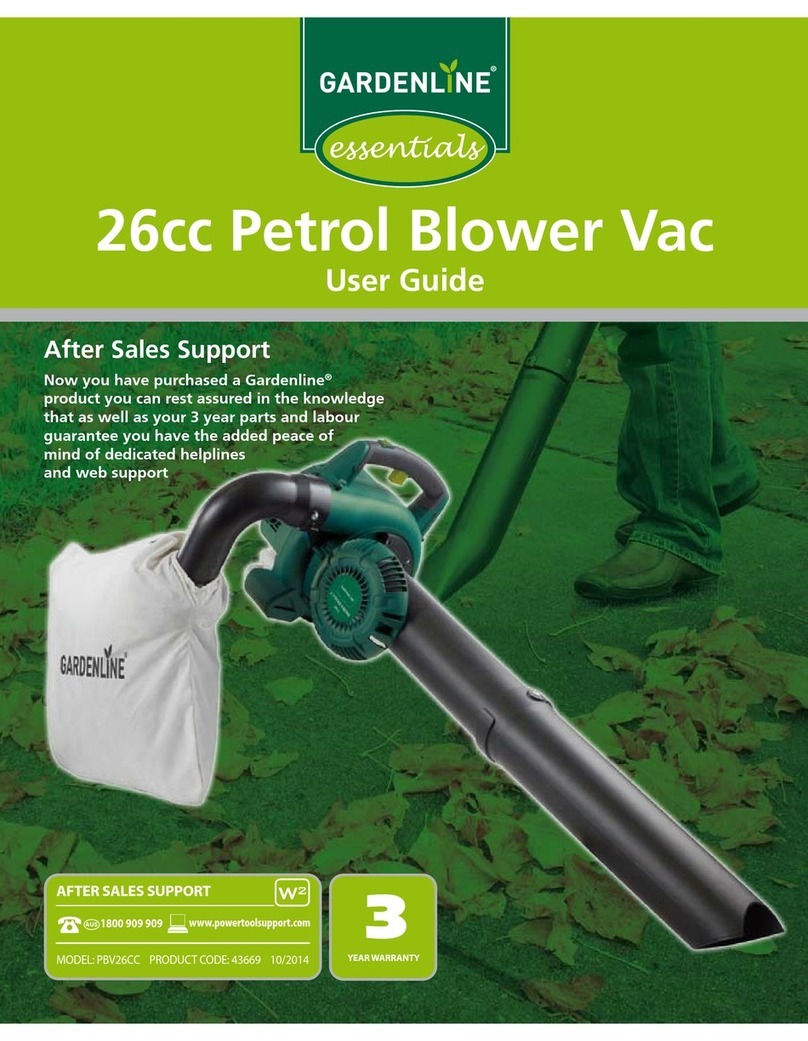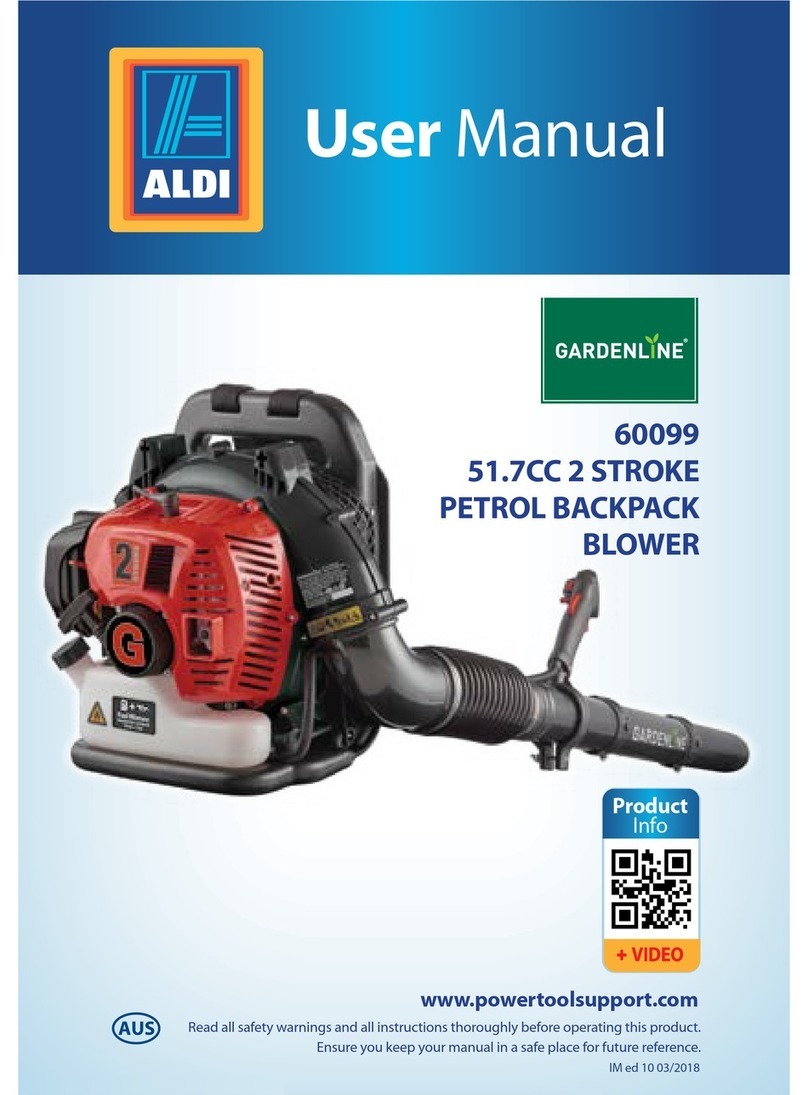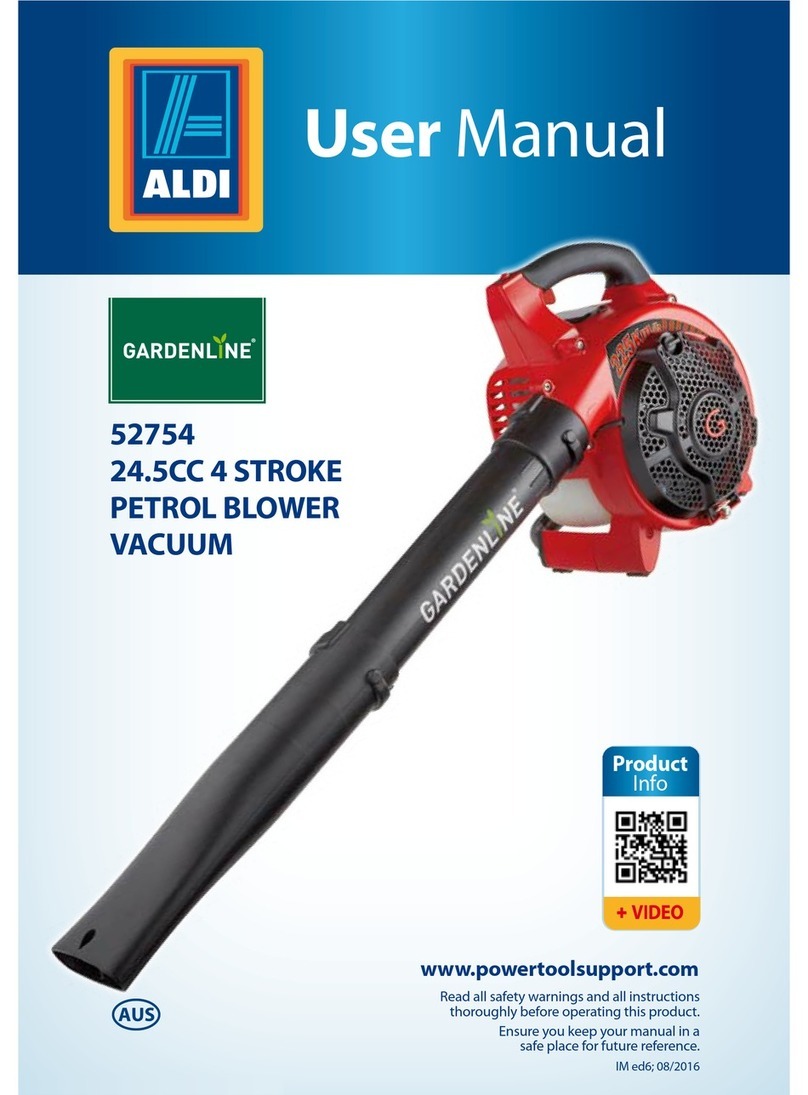d. Store idle power tools out of the reach of children and do not allow persons
unfamiliar with the power tool or these instructions to operate the power tool.
Power tools are dangerous in the hands of untrained users.
e. Maintain power tools. Check for misalignment or binding of moving parts,
breakage of parts and any other condition that may affect the power tool’s
operation. If damaged, have the power tool repaired before use. Many accidents
are caused by poorly maintained power tools.
f . Keep cutting tools sharp and clean. Properly maintained cutting tools with sharp
cutting edges are less likely to bind and are easier to control.
g. Use the power tool, accessories and tool bits etc. in accordance with these
instructions, taking into account the working conditions and the work to be
performed. Use of the power tool for operations different from those intended
could result in a hazardous situation.
h. This appliance is not intended for use by persons (including children) with reduced
physical, sensory or mental capabilities, or lack of experience and knowledge,
unless they have been given supervision or instruction concerning use of the
appliance by a person responsible for their safety.
i. Children should be supervised to ensure that they do not play with the appliance.
5. Service
a. Have your power tool serviced by a qualified repair person using only identical
replacement parts. This will ensure that the safety of the power tool is
maintained.
Additional safety rules for blower vacs
• Always wear adequate protective clothing when operating the tool to avoid
injuries to face, eyes, hands, feet, head or hearing. Use safety glasses or a face
shield, high boots or sturdy shoes, long trousers, work gloves, a hard hat and ear
defenders.
• Do not start the tool when it is upside down or when it is not in the operating
position.
• Switch the motor off and remove the plug when the tool is not being used, left
unattended, being cleaned, being moved from one place to another or when the
extension cord is entangled or damaged.
General Information & Safety Instructions
2



































